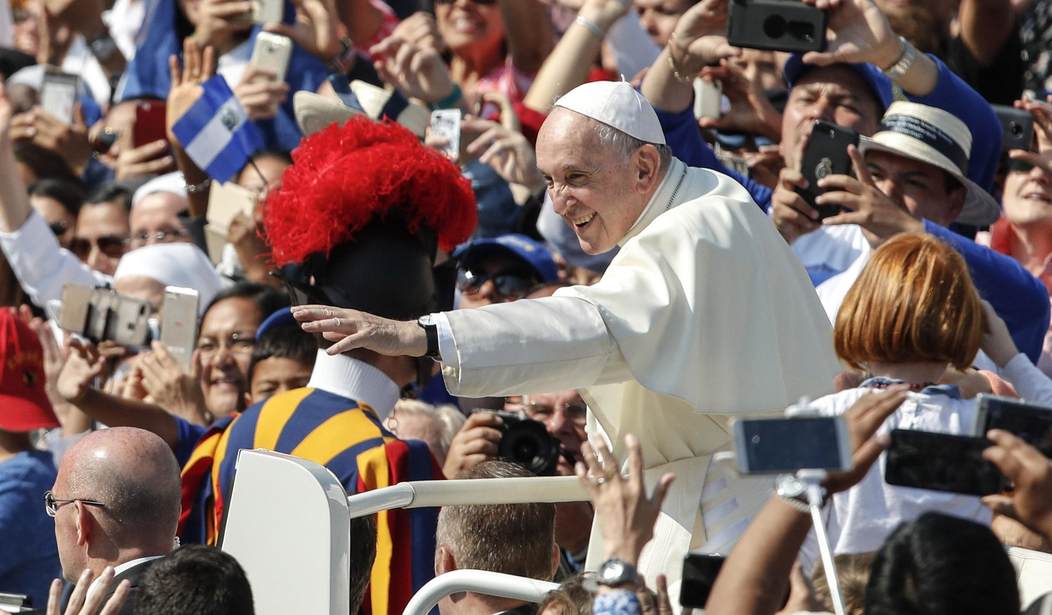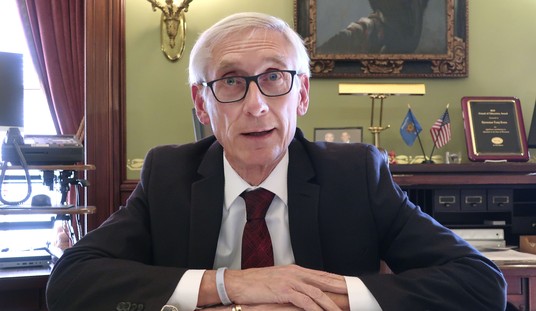When Pope Francis was elected pope, a lot of people were asking, “What do you think of the new pope?” It was a question that made the rounds like an ice cream truck on a hot July day. Most people gave positive answers to that question. Who, after all, wouldn’t like a man who insists on paying his own hotel bill? Who wouldn’t like a man who isn’t afraid to break protocol, such as walking past the Swiss Guards to give babies a kiss and crippled elderly people a hug? Gestures like these are guaranteed to win public approval, much like President Carter’s famous bypassing of protocol when he and first lady Roslyn walked rather than riding in the presidential limo on Inauguration Day. These are true “man of the people” moments that fire up applause meters and warm the heart of the sentimental.
When Cardinal Bergoglio (of Buenos Aires) was elected the 266th pontiff of the Catholic Church, the first thing I did was reach for the William Strunk Jr. and E.B. White 1918 English grammar classic, The Elements of Style. “Style” is mostly defined as a superficial outward form, like an innovative Calvin Klein suit or a new ladies’ hat. A demagogue can have a fantastic personal style; he or she can even be charismatic and warm with a winning smile or can have a sour disposition. In both cases, the substance—what the individual believes and stands for—has not changed, hence one can say with complete certainty that personal style is not an indicator of substance or “brains.” “All style and no substance” is a popular phrase that comes to mind.
With Pope Francis, the Catholic Church has gotten quite a change in style. In many ways that style is “low church,” meaning plainer and quieter Masses and services, plainer looking vestments, smaller miters. With Pope Benedict XVI we saw the rich liturgical tapestry of Catholicism despite the fact that Benedict may have gone overboard with those red shoes. Eccentric extremes, I suppose, can be controversial, even if sometimes understandable. What is less understandable is the arbitrary changing of ceremonial rubrics.
At his installation Mass (it used to be called Coronation Mass but now it sounds like an aisle in Home Depot), for instance, Francis wore an obviously ugly white miter and a rather drab uninspiring white linen vestment that seemed to downplay the importance of the event. He also made two abrupt ceremonial simplifications when, after his election, he went to the balcony of Saint Peter’s to deliver his first Urbi et Orbi address. He refused the red mozzetta and the papal stole, something that even liturgically liberal Pope John Paul I and John Paul II never did. Why did he do this? Why would a new leader ignore historical precedents? Imagine a future king or queen of England refusing the trappings of office during a much-anticipated coronation. Is this ego at work, a kind of narcissistic streak of independence—“Look at me, notice me, I’m different…I am so humble!”—or is something else going on?
Some say that Francis’ liturgical minimalism is the result of his personal humility and concern for the poor. While these sentiments may be laudable, as one commentator on the traditionalist Rorate Caeli website put it, “The pope may be indeed humble in other matters, not when it comes to liturgy. When it comes to liturgy, to the rites and ceremonial of the Church, the humble attitude is to follow the traditional code, the prescribed rubrics or custom, even if that’s not what you would like best. To impose one’s will, one’s personal preference, even if one is the Pope, over the established ceremonial of the Church is not humble attitude by any means.”
If I were to read the papal tea leaves, I’d say that as the first Jesuit pope, Francis will make other ceremonial changes that will shock traditional Catholics. Traditional Latin Mass congregations were worried that Francis would attempt to undo some if not all of the liturgical changes (the reform of the reform) brought about by Pope Benedict. Modern-day Jesuits, after all, are usually regarded as avant-garde liturgists and edgy theologians. For proof of this just pick up any copy of America magazine, a Jesuit-run publication that’s been singing the praises, at least editorially, of liturgical minimalism since the days of Vatican II. Founded as a religious order by Ignatius of Loyola in 1539 to defend the papacy, many Jesuits today have evolved into theological nay-sayers at odds with the tenets of their own religion. While the freedom to philosophize and go out on a limb can be a fine thing, it seems weird to me when I hear of Jesuits and other Catholic priests telling priest friends of mine that they “don’t really believe in those things anymore” — those things meaning a prohibition against birth control or the Church’s teachings on sexuality — but in the Real Presence at Mass, that Jesus was the son of God, or most anything having to do with the Virgin Mary. This sort of thinking has become common after Vatican II. Call them badges of honor for the quintessential radical priest.
Cardinal Roger Mahony of Los Angeles, famous for liturgical innovation and currently on the firing line for his role in covering up scores of clergy sex abuse cases, was reported to have been estatic at the election of Pope Francis. As reported by Rorate Caeli, one of the cardinal’s tweets went this way: “Mass with Pope Francis: moving from High Church to Low Church & humble Church! What a blessing that we are encountering Jesus w/o trappings!”
As one critic of Mahony observed, what was this tweet if not a “reprehensible criticism of Pope Benedict?”
If you want to know a bit about Mahony’s liturgical style, check out his L.A. Masses on YouTube. There you will see hand clapping, evangelical style shakin’ and rollin’ along with dancing nuns twirling big incense bowls. Hopefully Pope Francis will not turn St. Peter’s into gymnasium central, although many expect him to replace Monsignor Guido Marini, papal master of ceremonies since 2007, with a rotating team of Franciscan liturgists. This has set off more alarm bells.
Perhaps all this talk of style and liturgy doesn’t mean much to the average Catholic. My Catholic neighbors tell me, for instance, that they much prefer the current Mass to “the old one.” In fact, they seem so content with the Conciliar Church—lay ministers, et al. —that they probably didn’t even notice the radical changes in ceremonial style happening in Rome. As one who grew up in the Catholic faith, I know that there are many in the Church who believe that any change in worship or practice, however radical, is inspired by the Holy Spirit, and that it is the duty of Catholics-in-the pews to go along with it. St. Thomas Aquinas, however, would disagree. He wrote: “There being an imminent danger for the Faith, Prelates must be questioned, even publicly, by their subjects.”
Perhaps Pope Francis will prove to be a good pope, and in the coming months will quell a tendency to chuck tradition to the four winds. Many people in my Orthodox parish of St. Michael the Archangel in Northern Liberties seem to like Pope Francis. They see him as capable of furthering, or even accomplishing, reunion with the Orthodox Church. That makes sense in a way. Francis first considers himself Bishop of Rome, not an imperial wizard, so one can easily imagine him moving the papacy back to where it was in the early days of the Church, as the first among equals, no more, no less, but with far less control over the family of geographical churches than is exercised today.
Since most of my Orthodox friends at St. Michael’s have never been Catholic, they did not witness firsthand the dismantling of so much Catholic tradition in the years since Vatican II. I’d place any bet, however, that most of them would not be happy if Patriarch Bartholomew of Constantinople or Patriarch Kirill of Moscow began minimizing the importance of icons or introducing radical changes into ancient ceremonial practices, not to mention turning a blind eye to [Orthodox] nuns doing a “nice” Mahony-style dance around the iconostasis.
“The buck stops here,” as has been said in many corner salons.









Join the conversation as a VIP Member